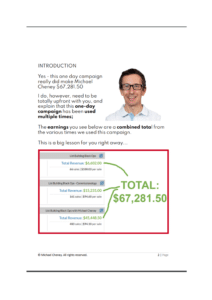Maximising Pinterests Potential in Affiliate Marketing: Learn how to effectively use Pinterests image-oriented platform, diverse user base, and SEO best practices to drive traffic, engagement, and sales for your affiliate campaigns.

Introduction to Pinterest in Affiliate Marketing
Pinterest’s image-oriented nature and large user base make it an ideal platform for promoting products and brands visually. The visual search engine aspect of Pinterest enhances the discoverability of affiliate products and services. Moreover, Pinterest’s free traffic potential makes it a cost-effective option for affiliate marketers to drive interest and sales. For example, affiliate marketers can leverage Pinterest’s visual appeal to create engaging pins that resonate with the platform’s users, leading to higher click-through rates and conversions. By strategically curating boards and pins that align with their niche and target audience, marketers can establish a strong visual identity on Pinterest, increasing brand visibility and engagement. Additionally, the platform’s emphasis on visual content allows for creative storytelling through pins, enabling marketers to connect with users on a more emotional and compelling level, driving them to take action on affiliate links.
Understanding Pinterest’s user base is essential for developing effective affiliate marketing strategies tailored to the platform’s demographics and preferences. By recognising the significant presence of women aged 25-34 on Pinterest, affiliate marketers can tailor their content to resonate with this key demographic, increasing the relevance and appeal of their pins. Moreover, the platform’s popularity in countries like the US, Brazil, Mexico, and Germany presents diverse market opportunities for affiliate campaigns. By localising content and leveraging cultural insights, marketers can engage with global audiences and drive more targeted traffic to their affiliate links. Additionally, tapping into Pinterest’s substantial referral traffic from platforms like YouTube and Facebook can expand the reach of affiliate marketing efforts, enabling marketers to reach a wider audience beyond the platform itself. Collaborating with influencers or content creators who have a strong presence on Pinterest can further enhance the visibility and credibility of affiliate campaigns, reaching new audiences and driving more traffic and conversions.
Setting Up for Success on Pinterest
Creating boards and pins aligned with the chosen niche is essential for establishing a cohesive visual identity on Pinterest. By categorising content into specific boards that reflect different aspects of the affiliate marketing niche, marketers can organise their pins effectively and make it easier for users to discover relevant content. For example, a fashion affiliate marketer could create boards dedicated to different clothing categories or style inspirations, providing users with a curated experience that aligns with their interests. Tracking the performance of affiliate links and pins through Pinterest Analytics is crucial for refining strategies and improving engagement. By monitoring key metrics such as click-through rates, saves, and impressions, marketers can identify top-performing content and optimise their pin designs and descriptions for better results. Consistent posting and engagement with the Pinterest community are also vital for growing a following and increasing the visibility of affiliate content. By actively participating in group boards, responding to comments, and sharing valuable content, marketers can foster relationships with users and build a loyal audience base that is more likely to engage with affiliate pins.
Growing a following on Pinterest through consistent posting and engagement can boost the visibility of affiliate content. By sharing a mix of original content, curated pins, and engaging with followers, marketers can establish a strong presence on the platform and attract more users to their affiliate links. Engaging with the Pinterest community through group boards and collaborations can also help in expanding the reach of affiliate campaigns and connecting with like-minded users who are interested in the niche. For instance, joining relevant group boards related to travel, fashion, or home decor can provide marketers with an opportunity to share their content with a targeted audience and drive more traffic to their affiliate links. Additionally, tracking the performance of affiliate links and pins is essential for understanding what resonates with the audience and refining strategies for better engagement and conversions. By analysing Pinterest Analytics data, marketers can gain valuable insights into user behaviour, preferences, and trends, allowing them to make data-driven decisions to optimise their affiliate marketing efforts on the platform.
 Creating Engaging Pins
Creating Engaging Pins
Utilising GIFs and videos in addition to static images can increase engagement and click-through rates on Pinterest. By incorporating dynamic visual elements into pins, marketers can capture users’ attention and encourage them to interact with the content. For example, a food blogger can create a video pin showcasing a recipe tutorial, enticing users to click through to the affiliate link for related products. Incorporating storytelling elements in pin descriptions can further enhance user engagement and drive action on affiliate links. By crafting compelling narratives that resonate with users’ emotions and aspirations, marketers can create a connection that motivates users to explore further. A/B testing different pin designs and formats is another effective strategy for identifying the most engaging content for affiliate marketing on Pinterest. By experimenting with variations in images, colours, and layouts, marketers can determine what resonates best with their audience and optimise their pins for maximum impact.
Experimenting with different pin formats, such as carousel pins or story pins, can provide a more interactive and immersive experience for users, increasing engagement levels and driving higher click-through rates. Carousel pins allow marketers to showcase multiple products or images within a single pin, offering users a comprehensive view of the offerings and encouraging exploration. Story pins, on the other hand, enable marketers to create a narrative sequence that unfolds as users scroll, captivating their attention and guiding them through a visual storytelling experience. By diversifying pin formats and incorporating multimedia elements, marketers can cater to different user preferences and behaviours, increasing the chances of attracting and retaining users on Pinterest. Additionally, leveraging video content or GIFs in pins can enhance user engagement and click-through rates, as moving visuals tend to capture attention more effectively than static images. For example, a home decor affiliate could create a GIF showcasing a room transformation, inspiring users to explore products and design ideas through the affiliate link.
 Best Practices for Optimising Affiliate Links on Pinterest
Best Practices for Optimising Affiliate Links on Pinterest
Pinterest’s SEO best practices, such as using relevant keywords and descriptions, can improve the visibility of affiliate pins in search results. By incorporating targeted keywords related to the affiliate niche or specific products, marketers can enhance the discoverability of their pins and attract users actively searching for relevant content. Implementing a clear and concise call-to-action in pins is essential for directing users towards taking the desired action, such as making a purchase through an affiliate link. By including compelling CTAs like “Shop Now” or “Discover More,” marketers can guide users towards engaging with the content and driving conversions. Regularly reviewing and updating affiliate links to ensure their accuracy and relevance is crucial for maintaining the effectiveness of affiliate campaigns on Pinterest. By monitoring the performance of links and updating them as needed, marketers can ensure a seamless user experience and maximise the opportunities for generating sales or leads.
In addition to SEO tactics, affiliate marketers can leverage Pinterest’s shopping features, such as ‘Shop the Look’ and ‘Product Pins’, to streamline the purchasing process for users and increase affiliate sales. ‘Shop the Look’ pins enable users to explore and purchase products directly from the pin, simplifying the shopping experience and reducing friction in the conversion process. Collaborating with influencers or content creators on Pinterest can also extend the reach of affiliate campaigns to a wider audience. By partnering with influencers who have a strong following and influence on Pinterest, marketers can reach new demographics and drive more traffic to their affiliate links. Tailoring pin content to seasonal trends or holidays can further capitalise on specific shopping behaviours and boost affiliate sales during peak periods. For example, creating themed boards or pins for seasonal promotions or events can attract users looking for gift ideas or special offers, increasing engagement and conversions.
Legal and Ethical Considerations
Ensuring compliance with FTC guidelines on disclosure of affiliate relationships is essential for maintaining transparency and trust with Pinterest users. By clearly disclosing any affiliate partnerships or sponsored content, marketers can build credibility and integrity with their audience, fostering trust and loyalty. Monitoring and addressing instances of spamming or misleading content related to affiliate marketing on Pinterest is crucial for upholding the platform’s integrity. By avoiding deceptive practices and providing valuable, authentic content, marketers can protect their reputation and maintain a positive presence on the platform. Adhering to Pinterest’s community guidelines and policies regarding acceptable content and promotions is vital to prevent potential account suspension or penalties. By following the platform’s rules and regulations, marketers can create a safe and engaging environment for users, ensuring a positive experience for all.
In addition to legal considerations, maintaining ethical standards in affiliate marketing on Pinterest is essential for long-term success and credibility. By prioritising user experience and providing valuable content, marketers can build trust with their audience and establish a loyal following. Avoiding misleading or clickbait tactics and focusing on creating genuine connections with users can help in fostering positive relationships and driving engagement. Furthermore, abiding by Pinterest’s policies and guidelines for acceptable content and promotions is crucial for ensuring a positive user experience and safeguarding against potential penalties. By aligning with the platform’s standards and best practices, marketers can create a trustworthy and reputable presence on Pinterest, enhancing their credibility and visibility among users.
Successful Campaign Strategies on Pinterest
Diversifying pin formats, such as carousel pins or story pins, can provide engaging experiences for users and drive higher engagement for affiliate content [2]. Carousel pins allow marketers to showcase multiple products or images within a single pin, offering users a comprehensive view of the offerings and encouraging exploration. By leveraging story pins to create a narrative sequence that unfolds as users scroll, marketers can captivate users’ attention and guide them through a visual storytelling experience. Engaging with Pinterest communities and group boards related to the affiliate niche can foster relationships with like-minded users and amplify the reach of affiliate campaigns. By actively participating in discussions, sharing valuable content, and collaborating with community members, marketers can expand their audience reach organically and drive more traffic to their affiliate links.
Implementing data-driven strategies, such as analysing Pinterest Analytics data and insights, can inform decision-making for optimising affiliate marketing performance on the platform. By monitoring key metrics like Pin performance, audience engagement, and traffic sources, marketers can gain valuable insights into user behaviour and preferences, enabling them to refine their strategies and content for better results. Leveraging Pinterest Analytics data empowers marketers to make informed decisions regarding content creation, posting schedules, and audience targeting, leading to more effective and successful affiliate campaigns on Pinterest. By continuously adapting strategies based on performance data, marketers can optimise their efforts for maximum visibility, engagement, and ultimately, affiliate sales.
Challenges and Solutions in Pinterest Affiliate Marketing
Overcoming the challenge of standing out in a visually competitive environment on Pinterest requires creative and innovative approaches to pin design and content. By experimenting with different visuals, colours, and layouts, marketers can create eye-catching pins that capture users’ attention and drive engagement. Adapting strategies to address the issue of copyright infringement is essential for maintaining the integrity of affiliate campaigns on Pinterest. By ensuring that all visuals and content used in affiliate pins are appropriately sourced and licensed for use, marketers can protect themselves against legal repercussions and maintain a positive reputation. Managing the fluctuating algorithm changes on Pinterest by staying informed about updates and adapting strategies accordingly is crucial for maintaining visibility and engagement for affiliate content. By staying up-to-date on algorithmic shifts and trends, marketers can adjust their approach to align with Pinterest’s evolving features and preferences, ensuring continued success in their affiliate marketing efforts.
Embracing a multi-faceted approach to affiliate marketing on Pinterest, encompassing visual storytelling, data analysis, and community engagement, can maximise the platform’s potential for driving sales and revenue. For example, creating visually appealing pins that tell a compelling story, analysing performance data to refine strategies, and engaging with the Pinterest community can create a holistic marketing strategy that resonates with users and drives conversions. Continuously evolving strategies and staying attuned to Pinterest’s evolving features and trends will be key to sustaining success in affiliate marketing on the platform [1]. By adapting to changes in the platform, experimenting with new approaches, and engaging with users authentically, marketers can stay ahead of the curve and maximise their impact on Pinterest.
By following these best practices and strategies, affiliate marketers can leverage the power of Pinterest to drive interest, engagement, and ultimately, sales for their affiliate products and services. With its visual-centric approach, diverse user base, and engagement-driven features, Pinterest offers a unique and valuable platform for affiliate marketing success.


If you’ve been struggling online this report will open your eyes.

 Creating Engaging Pins
Creating Engaging Pins Best Practices for Optimising Affiliate Links on Pinterest
Best Practices for Optimising Affiliate Links on Pinterest